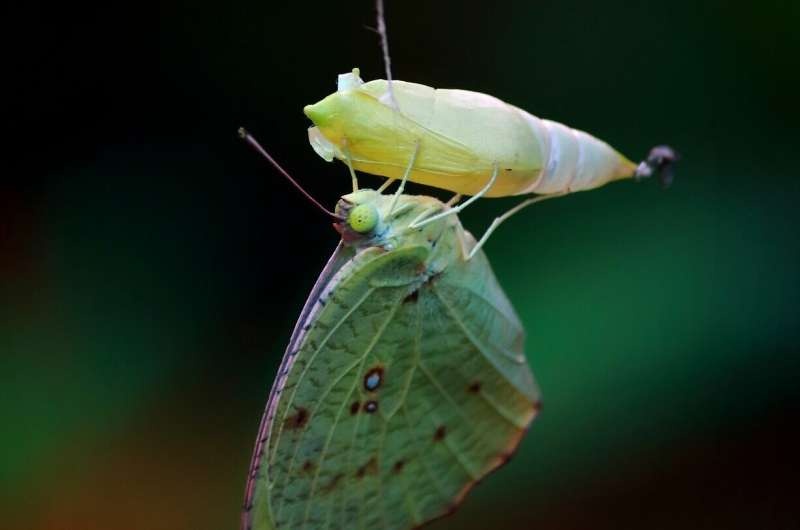Discover the evolutionary advantages that led to the remarkable metamorphosis of insects, as revealed by a groundbreaking study. Uncover the fascinating insights into the origins of complete metamorphosis and its impact on the insect world.

The Tail of the Metamorphosis Rapid Growth
However, a new study led by Freie Universität Berlin and Princeton University researchers offers an elegant explanation for why complete metamorphosis has evolved so broadly in insects.
The finding, say the researchers, is that insects with a pupal stage — including beetles, butterflies, and flies — experience rapid growth relative to those lacking this transformation — such as aphids, crickets and grasshoppers.
Such rapid growth may constitute a considerable evolutionary advantage because it makes insects more able to exploit limited food resources or short seasons, more effectively. Its rapid, adult-form maturation in the pupa may also help certain insects launch into the world as reproductive-ready adults and stay ahead of the evolutionary curve.
Metamorphosis by the Number
In order to show this hypothesis could be plausible, the researchers collaborated with Professor Jessica Metcalf from Princeton University and constructed a mathematical model.
The model was used to produce a number of simulations that showed the fitness advantages of complete metamorphosis by drawing on data from several different insect species, both with and without pupal stages. These results offer compelling evidence that the elaborate process of metamorphosis arose as a product of selective pressures for growth coordinated to a short time frame — resulting, eventually, in the evolution of the ability to make babies faster than competitors when life is tough or limited by seasons.
By taking a mathematical approach, the researchers were able to measure how much of an advantage complete metamorphosis offers, shedding light on a basic element of insect biology. The new data-based models explain why this evolutionary strategy became so common among insects.
Conclusion
The implications of the study are that complete metamorphosis played a key role in the success and great diversity among insects, which make up more than 60% of all animal species. In light of the enduring legacy of these charismatic beasts on our ecosystems and food production systems, by gaining insights into the evolutionary beginnings of their remarkable metamorphism, we can develop a deeper appreciation for how the gears in nature fit together. The research sets an excellent example of what can be achieved by scientific inquiry and mathematical modeling in revealing the basic physics behind the stunning adaptations that life has made on this planet.
